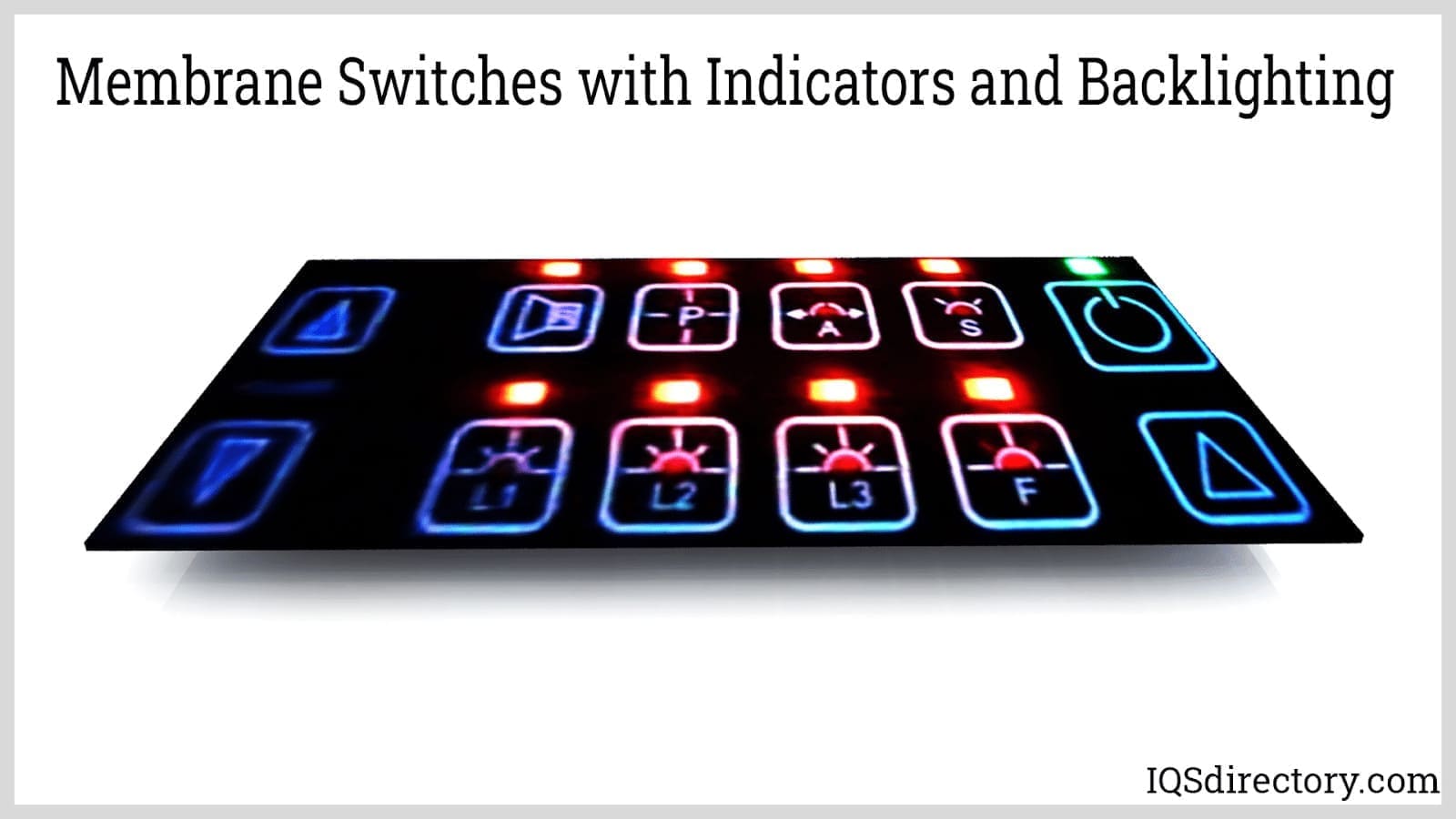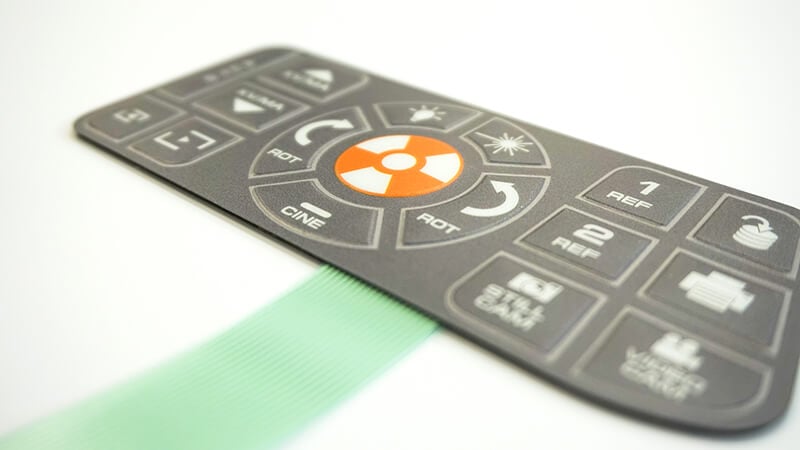The Impact of Membrane Switches on User Interface and Device Functionality
The Impact of Membrane Switches on User Interface and Device Functionality
Blog Article
Just How Membrane Layer Changes Improve User Experience in Electronic Instruments
Membrane layer switches play a vital duty in boosting individual experience across various digital gadgets, integrating functionality with aesthetic allure. Their structured layout not only optimizes space yet additionally assists in simple maintenance, while tactile responses gives users with guarantee throughout procedure. Their durable building makes sure durability and trustworthy efficiency in varied settings. As we check out the diverse benefits of membrane buttons, it ends up being apparent that their integration expands past mere functionality to affect total contentment and involvement. The ramifications of these features on specific industries require a closer examination.
Advantages of Membrane Switches
Membrane layer switches offer various benefits that boost both functionality and user experience in different applications. One of the crucial advantages is their compact design, enabling a structured interface that minimizes the general impact of digital devices. This space-saving function is especially useful in portable and portable devices, where size and weight are crucial factors to consider.
Additionally, membrane switches are very durable, commonly including resistance to dampness, dirt, and chemicals. This durability guarantees long-lasting dependability, making them suitable for use popular environments such as industrial applications and medical tools. The absence of moving components additionally contributes to their longevity, reducing wear and tear over time.
In addition, membrane layer switches are easy to clean and maintain, as their flat surface area stops debris build-up. This characteristic is crucial in setups that need high health requirements, such as food processing and health care.
Additionally, these switches can be integrated with responsive feedback technologies, enhancing customer communication by offering physical feedback upon activation. This attribute not just boosts functionality but likewise lowers the chance of user error, thereby elevating the total experience. In summary, membrane layer changes deliver a mix of resilience, area effectiveness, and usability that substantially profits numerous digital applications.
Design Versatility and Appearance
While functionality is vital, the style adaptability and looks of membrane switches play a considerable role in boosting user experience. Membrane switches over use a vast selection of personalization options, enabling designers to develop interfaces that straighten with the overall feel and look of the gadget. This flexibility is especially valuable in sectors such as consumer electronics, clinical devices, and commercial equipment, where aesthetic appeal can influence user engagement and satisfaction.

Furthermore, the incorporation of tactile responses choices, such as increased or textured surfaces, enhances the sensory experience, making the user interface not only aesthetically appealing however also a lot more user-friendly. By marrying aesthetic factors to consider with useful design, membrane changes properly raise the user experience, motivating communication and fostering brand name loyalty. Hence, the style versatility and visual appeals of membrane layer switches are essential in creating devices that are both useful and aesthetically exciting.
Enhanced Resilience and Long Life
A considerable advantage of membrane switches hinge on their enhanced toughness and longevity, making them an excellent choice for demanding applications. Built from robust products such as polyester or polycarbonate, membrane buttons are immune to use, dampness, and chemicals, which ensures their performance in different atmospheres. This longevity considerably decreases the demand for regular replacements, thus decreasing lasting upkeep prices and lessening downtime in vital operations.

Additionally, the covered nature of membrane layer switches safeguards internal circuitry from impurities like dirt and fluids, even more extending their functional life-span. This feature is specifically beneficial in markets such as medical care, see this website automotive, and industrial controls, where devices is commonly subjected to harsh conditions.
In addition, membrane buttons can sustain comprehensive cycles of pushing without degrading their functionality, which is important in high-traffic applications. Their resistance to physical anxiety enables them to preserve dependable performance with time, contributing to a constant customer experience.
Tactile Comments and User Communication
The user experience of membrane buttons is considerably improved by their tactile comments, which plays a crucial function in customer interaction. Tactile feedback refers to the physical feeling individuals get when they involve with the controls, providing a calming feedback that verifies input. This sensory responses is essential in guaranteeing that users really feel connected to the device, promoting a more intuitive interface.
When individuals press a membrane button, the responsive experience signals that their activity has been registered, minimizing unpredictability and improving self-confidence in procedure. This communication is especially helpful in settings where customers might be distracted or under time constraints, as it enables precise and quick feedbacks without the need for aesthetic confirmation.

Applications in Various Industries
Membrane layer buttons locate applications across a varied variety of sectors, showcasing their versatility and flexibility. In the medical field, they are frequently utilized in analysis devices and person surveillance systems, where dependable and easy-to-clean user interfaces are vital. Their ability to stand up to extreme cleaner makes them ideal for settings needing high health criteria.
In the auto industry, membrane buttons assist in customer interaction with controls for navigation systems, climate control, and amusement systems (membrane switch). Their small design permits assimilation into restricted spaces, while their durability ensures lasting performance regardless of consistent use
Consumer electronics additionally gain from membrane layer buttons, especially in devices such as microwaves, washing devices, and click this link push-button controls. The responsive responses and customization choices improve the individual experience, providing user-friendly procedure.
Furthermore, membrane layer buttons are made use of in industrial applications, managing machinery and tools. Their toughness and resistance to environmental factors like dust and wetness add to enhanced integrity.
Conclusion
In verdict, membrane changes dramatically enhance customer experience in electronic tools through their design versatility, longevity, and responsive comments. The capability to produce streamlined interfaces enables for reliable use of area, while resistance to environmental variables more info here makes certain reputable operation across diverse applications. The combination of these attributes not just enhances functionality but additionally promotes user self-confidence and complete satisfaction (membrane switch). Membrane layer switches over stand for an important component in the development of modern digital gadgets, driving technology and involvement.
Membrane buttons play an essential role in boosting individual experience across different electronic gadgets, incorporating performance with visual appeal.Membrane layer switches offer numerous benefits that improve both capability and user experience in various applications.While performance is critical, the style adaptability and aesthetics of membrane switches play a substantial function in boosting individual experience.The individual experience of membrane buttons is dramatically boosted by their tactile responses, which plays a vital function in customer interaction.In verdict, membrane changes significantly improve user experience in electronic devices with their layout flexibility, sturdiness, and responsive feedback.
Report this page